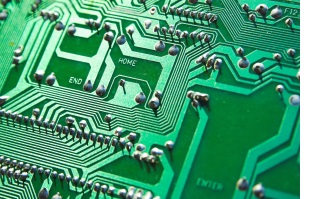Enable Collaboration & Streamline Workflow with SOLIDWORKS Electrical Training
 In an increasingly digital world, electronics have become a critical part of the way we communicate and get work done. Whether we notice it or not, electrical systems and printed circuit boards surround us every day.
In an increasingly digital world, electronics have become a critical part of the way we communicate and get work done. Whether we notice it or not, electrical systems and printed circuit boards surround us every day.
In order to meet demand, designers and engineers have to create new products while continuously driving innovation and staying ahead of the competitive curve. Their success lies in their ability to design smarter products and unify the electrical and mechanical processes, but this is not always easy. Leveraging SOLIDWORKS CAD and improving communication between the different teams is crucial to improving workflow and lowering costs.
Watch our free two-part webcast, “Designing Mechatronic Products,” on July 24 and 26 to learn how you can be smarter when developing smart products by leveraging SOLIDWORKS Electrical and SOLIDWORKS PCB to unite your mechanical and electrical engineering teams. With electrical built into everything from consumer products and industrial equipment to aerospace and automotive, this SOLIDWORKS Electrical training will help you find an integrated approach that’s applicable to almost every industry.
Here are some of the ways SOLIDWORKS Electrical and SOLIDWORKS PCB can create helpful change in your process.
Simplify the Electrical Design Process
SOLIDWORKS Electrical offers a wide range of features that help simplify the electrical design process. Users can plan their electrical systems with single-line and multi-line schematic tools, and add an extra layer of realism to their design by integrating 2D schematics and 3D models. One of the software’s biggest advantages lies in its library database of more than 500,000 manufactured parts, placing ready-made pieces right at your designers’ fingertips. These features can help create more consistent and standardized designs, allowing you to reduce production time and get to market faster.
Enable Collaboration Between Electrical and Mechanical
In addition to simplifying the design process, SOLIDWORKS Electrical helps with one of the biggest obstacles faced when designing electrical products: the lack of collaboration between the electrical and mechanical teams.
In a best-case scenario, the person designing the board (typically a mechanical engineer) would collaborate concurrently with the PCB board designer, creating a helpful cycle of feedback and design improvements. However, this type of collaboration is usually harder to do when not all the design is in one shop, and a lack of communication can slow down the design process significantly.
SOLIDWORKS Electrical and SOLIDWORKS PCB bridge these communication gaps by allowing teams to work concurrently, and collaborate between ECAD and MCAD domains. According to SOLIDWORKS, SOLIDWORKS PCB provides “intelligent, ‘on-demand’ communication and collaboration between electronic and mechanical teams.” These features enable cross-discipline product development, allowing teams and users to share common design and data for smarter and more consistent designs.
Although PCB may be only one small part of your workflow, its easy-to-use interface and collaboration abilities make it a worthwhile investment for quickly creating consistent parts across teams — and then getting those parts to market faster than your competitor.
Smooth Out the Electrical Design Process
It’s not surprising that the more intelligent and connected design of modern electrical products demands their designers be, too – but this is easy to derail if you aren’t careful. Frequent changes to board design and multiple prototypes/board spins are common barriers to efficient design, but SOLIDWORKS CAD makes it easier to visualize, create, and modify your designs. This accelerated design process (along with the multi-discipline collaboration of SOLIDWORKS PCB) can help you design smarter and faster for a higher profit.
Although some workflows will always remain separate, they should stay communicative and in sync, with the most productive tools they can get for all aspects of product design.
If you’re interested in learning more about leveraging SOLIDWORKS Electrical and SOLIDWORKS PCB to increase your efficiency and collaboration contact us.
Related Articles
Joining Forces: Design in Parallel with SOLIDWORKS Electrical and PCB
What’s New in SOLIDWORKS Electrical 2018
How SOLIDWORKS Electrical and PCB Get Rid of the Guesswork
About the Author
 Christa Prokos is a marketing manager at Fisher Unitech. She researches and writes about the latest business trends and technologies impacting manufacturers, including 3D printing, SOLIDWORKS 3D CAD design and product data management tools, product lifecycle management, virtual reality, and the Internet of Things. Christa has worked as a high tech marketing and communications professional since 2000. You can follow her on Twitter: @ChristaProkos.
Christa Prokos is a marketing manager at Fisher Unitech. She researches and writes about the latest business trends and technologies impacting manufacturers, including 3D printing, SOLIDWORKS 3D CAD design and product data management tools, product lifecycle management, virtual reality, and the Internet of Things. Christa has worked as a high tech marketing and communications professional since 2000. You can follow her on Twitter: @ChristaProkos.

 Blog
Blog